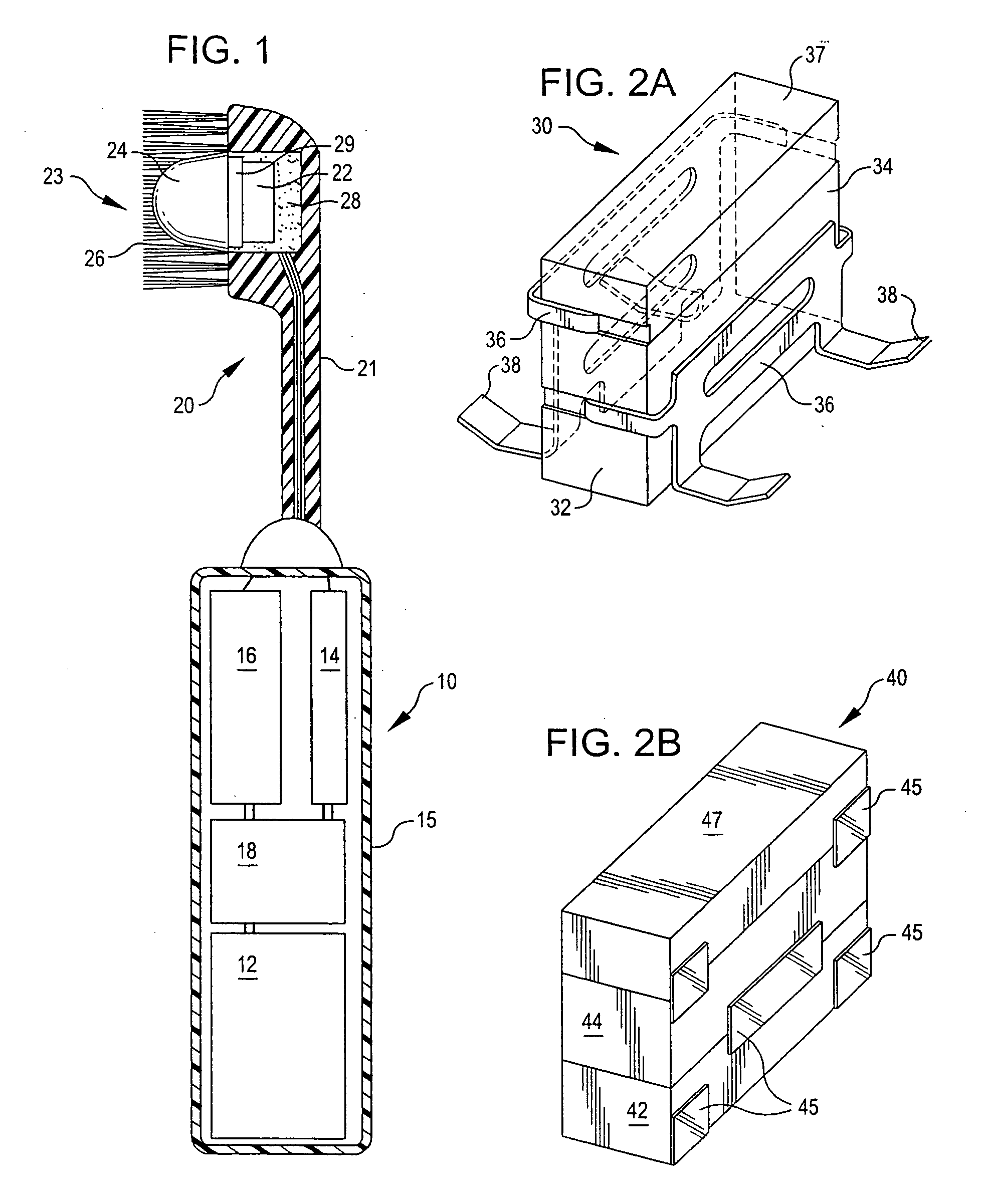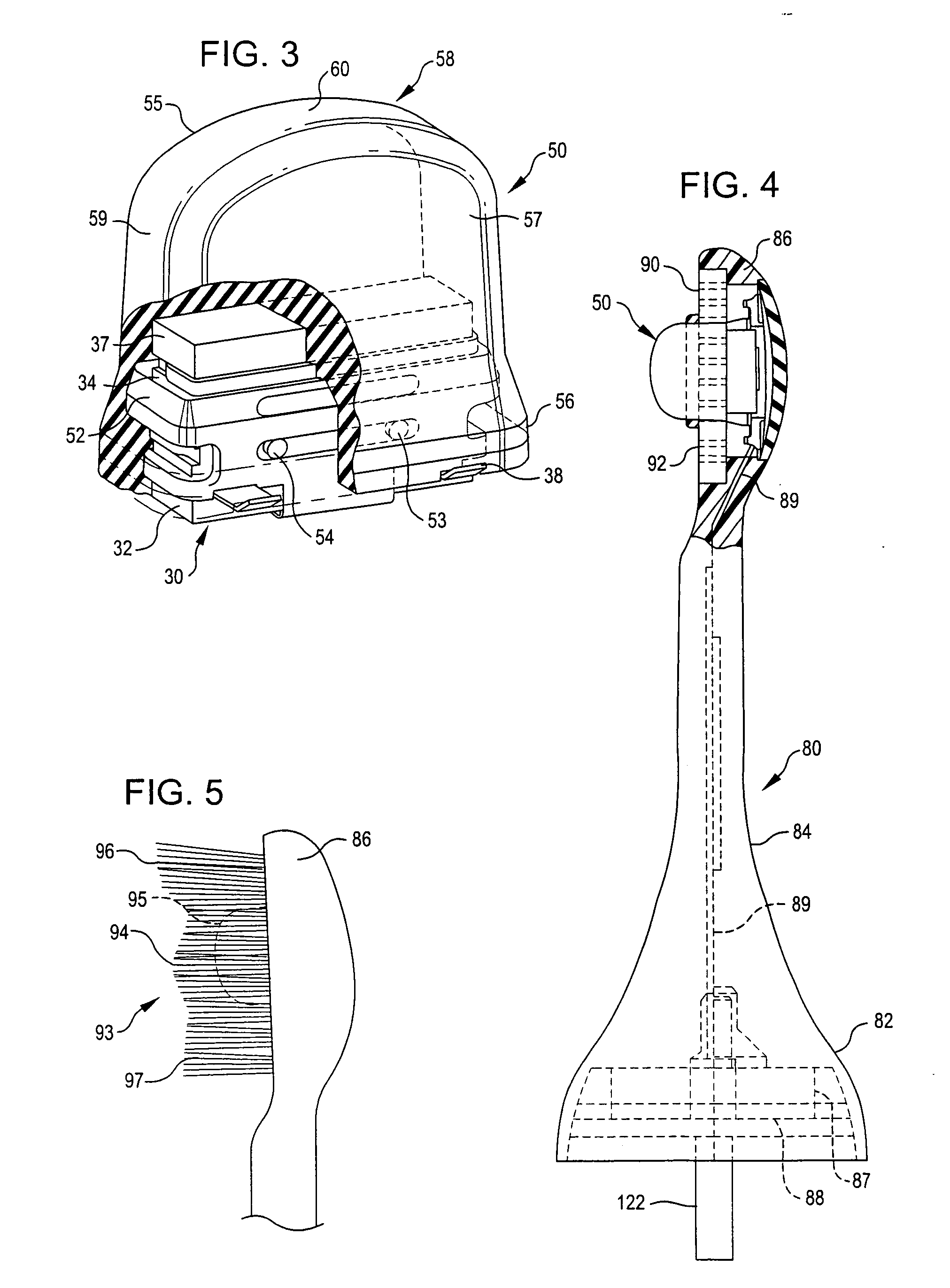Oral hygiene devices employing an acoustic waveguide
a technology of oral hygiene and waveguide, which is applied in the field of oral hygiene devices employing acoustic waveguide, can solve the problems of toothbrushes that fail to exploit the ultrasound acoustic energy of toothbrushes, toothbrushes that disclose, and fail to consider microbubbles and macrobubbles as potential impediments to ultrasound propagation, etc., to improve the dental cleaning experience, stimulate and massage the gums, and improve the mouth feel
- Summary
- Abstract
- Description
- Claims
- Application Information
AI Technical Summary
Benefits of technology
Problems solved by technology
Method used
Image
Examples
Embodiment Construction
[0039] As used herein, the terms “ultrasound” and “ultrasonic” refer to acoustic energy having a frequency greater than the normal audible range of the human ear—generally a frequency greater than approximately 20 kHz. The term “sonic” refers to acoustic energy, or sound, having a frequency that is within the normal audible range of the human ear—generally less than about 20 kHZ—for example, between 20 Hz and 20 kHz.
[0040] As used herein, the term “cavitation” refers to the generation and / or stimulation of bubbles by sound. By “generation” is meant the creation of bubbles; by “stimulation” is meant the action that causes the bubbles to become dynamically active—that is, to move, to get bigger or smaller, to grow, to dissipate, all with associated mechanical and / or chemical effects in and around the fluid surrounding the bubbles and within the gas inside the bubbles. The term “cavitation” refers to the interaction between an ultrasonic field in a liquid and in gaseous inclusions (e....
PUM
 Login to View More
Login to View More Abstract
Description
Claims
Application Information
 Login to View More
Login to View More - R&D
- Intellectual Property
- Life Sciences
- Materials
- Tech Scout
- Unparalleled Data Quality
- Higher Quality Content
- 60% Fewer Hallucinations
Browse by: Latest US Patents, China's latest patents, Technical Efficacy Thesaurus, Application Domain, Technology Topic, Popular Technical Reports.
© 2025 PatSnap. All rights reserved.Legal|Privacy policy|Modern Slavery Act Transparency Statement|Sitemap|About US| Contact US: help@patsnap.com



